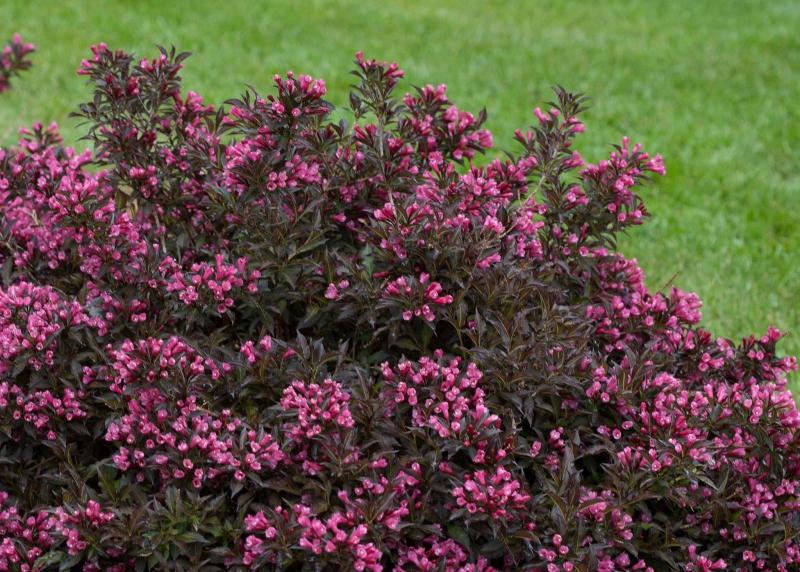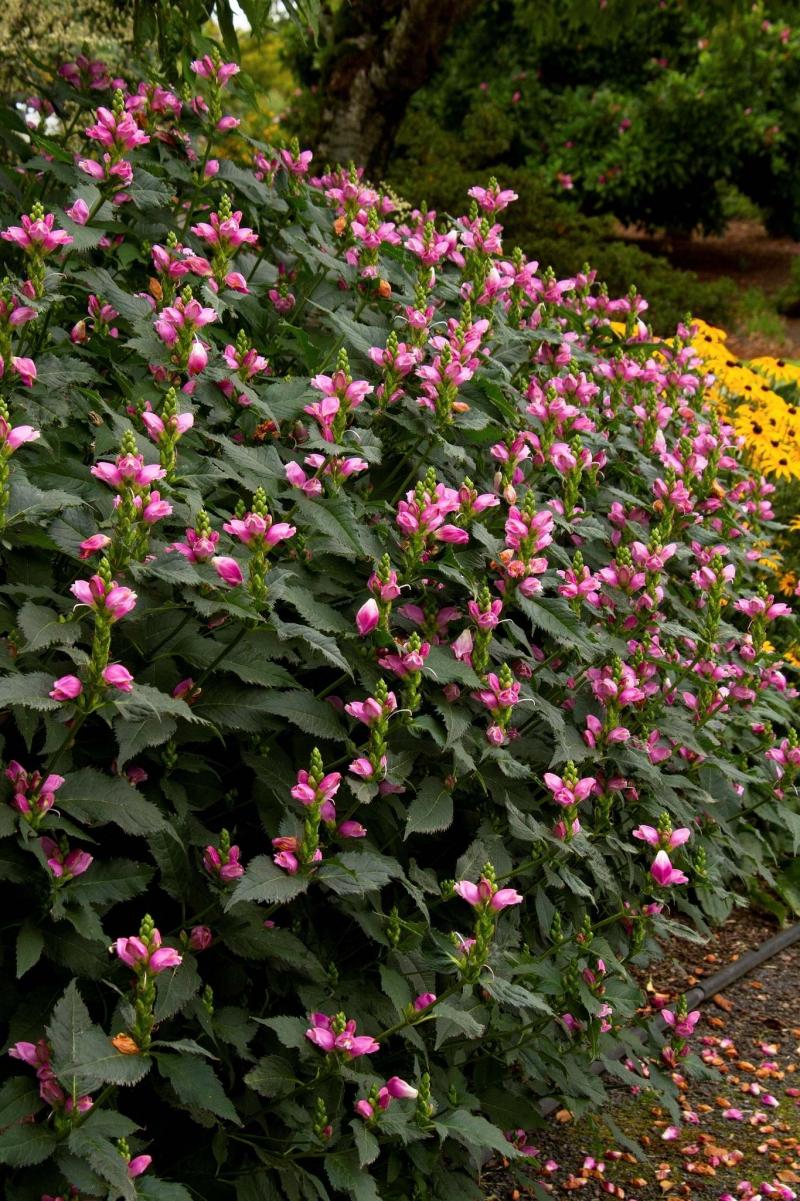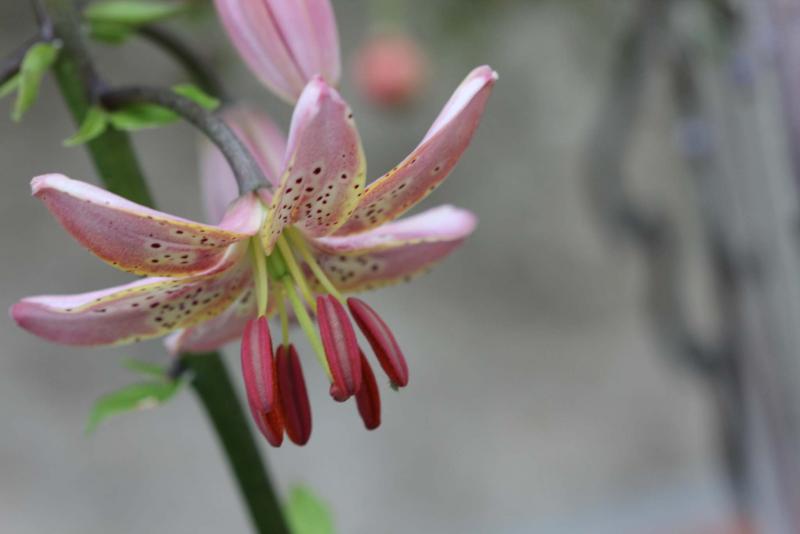
Proven Winners
Spilled Wine Weigela, named the 2018 Landscape Plant of the Year, and other shrubs are perfect for planting into fall's warm soils.

Roswitha Nowak
Act quickly before frost arrives and take cuttings from your favourite annuals to overwinter indoors. This lovely rosebud geranium originates from cuttings taken 30 years ago, a gift that keeps on giving.

Monrovia
Turtleheads are long-lived, hardy perennials and a great choice for part-sun locations.
Most fall gardening tasks can be divided into two categories — mandatory and optional (with some being more optional than others).
Should you cut back your perennials in fall? Will flax straw protect your borderline hardy perennials? How can you prevent vole damage? What is the best way to take cuttings from annuals? What should you do with all your leaves? What can you plant in fall?
These and many other questions are pertinent at this time of year, although my preference is to start with the last one. Purchasing one or a few new plants and installing them in your garden provides motivation to tackle your fall to-do list, but also serves as a means for addressing some of your questions.
One local garden centre I visited is carrying Chelone (Tiny Tortuga) Turtlehead. Chelone (pronounced che-LON-ay) is an exceptional herbaceous perennial that is native to North America.
A reliable late-summer bloomer, Chelone’s sturdy, upright stems produce unusual two-lipped blooms that resemble a turtle’s mouth. Indeed, its name is from the Greek Khelone, meaning tortoise.
White-flowered C. glabra and rosy-pink flowered C. obliqua are two commonly grown species, which both grow to about 90 centimetres.
Tiny Tortuga is a compact form of Chelone lyonii (growing only about 28 to 35 cm high), and has thick green leaves in comparison with the smoother, lighter green foliage of other turtlehead varieties.
Suited to our harsh climate, turtleheads are very long-lived and will spread slowly over time by rhizomes to form clumps. A low-maintenance plant, turtlehead has a preference for moist soils, although it adapts surprisingly well to heavy clay conditions. It prefers a location with moderate sun to part shade.
I have also been tempted by Epimedium Fire Dragon, a dainty, shade-loving ground cover that grows to about 20 cm tall and wide. Classified as Zone 4, it is hardy to -34 C.
Fire Dragon’s spurred blooms with light-purple bracts appear in spring and are held above heart-shaped foliage on the slenderest of stems. Epimedium will tolerate dry shade, but it thrives best in evenly moist soil that has been amended with plenty of organic matter.
Newly purchased perennials should be planted as soon as possible to encourage good root establishment. Consider enriching your soil and promoting good drainage by working in a three- to five-cm layer of organic matter such as aged compost.
Perennials should be watered-in well at the time of planting in order to encourage a healthy root system. Water deeply once a week until the ground freezes.
All perennials — whether new or established, hardy or marginally hardy — are better able to withstand winter’s freezing temperatures if they are well-hydrated.
Not everyone likes to leave the dried stalks of perennials standing over winter; however, it’s a good idea to wait until after several hard frosts before cutting down stalks.
Don’t cut back your new perennials, though — leave the stems standing to help trap snow, which helps to insulate the crowns.
First-year perennials, including varieties that are marginally hardy, should be protected with a five- to 10-cm layer of mulch around each clump.
Mulching with shredded leaves is ideal. Gather leaves in the fall, spread them out in a thin layer and run over them with your lawn mower.
Avoid applying mulch too early — wait until after the first few light frosts.
If you have an abundance of leaves, store them in plastic bags for later use. Before securing the bag, add a thin layer of grass clippings and a small amount of water. Close and tie the bag and punch a few small holes in the sides. In two years’ time, you will have a nutrient-rich leaf mold that can be added to flower or vegetable beds as a valuable soil amendment.
Fall is a great time for planting shrubs. In addition to some of the more obvious advantages — such as warm soils, reduced heat stress and less risk of damage by insects or disease — installing shrubs early enough in the fall season gives your plants a head start on growth.
After growing Physocarpus Summer Wine as a container plant this summer, I’m preparing to transplant it into the garden. If I’m successful in finding Spilled Wine Weigela, a Zone 4 shrub that has just been named 2018 Landscape Plant of the Year by Proven Winners, I will install it in the garden this fall as well.
Spilled Wine Weigela is a compact, low-growing shrub that is wider (60 cm) than it is tall. It sports deep-purple foliage and bright-pink flowers that bloom in spring.
A layer of flax straw adds a protective layer of insulation for the roots of newly planted shrubs. But it also provides a cozy shelter for voles, which do considerable damage to shrubs over the winter under the cover of snow. It is not only the young, tasty bark of new shrubs that voles like to strip off and chew, but also the bark of mature shrubs and trees.
To protect against winter vole damage on shrubs, try wrapping a layer or two of hardware cloth fencing around the base of the plant, taking care to sink the woven-wire mesh into the soil.
If you are planning to plant tulip bulbs this fall or stopping by the Manitoba Regional Lily Society’s fall bulb sale today at Assiniboine Park Conservatory to pick up Asiatic or martagon lily bulbs, hardware cloth fencing is also effective at protecting fall-planted bulbs from rodents. Lay the wire mesh on the surface of the ground and sink sections into the ground as a protective barrier around your newly planted bulbs.
While some fall chores can wait a while, taking cuttings from annuals or bringing tender plants indoors are tasks that should be done now, before there is any risk of frost.
Each year, Roswitha Nowak, a member of the West Kildonan Garden Club, takes cuttings from a treasured variety of rosebud geranium for overwintering indoors. Originally grown from cuttings that her mother brought back from a visit to Germany more than thirty years ago, Nowak also takes cuttings from Vancouver Centennial geranium, scented geraniums and coleus.
Using a sharp, sterile X-Acto knife that she dips into a container filled with nine parts water to one part bleach, Nowak removes 10 to 15 cm of the newest growth on a selected stem, cutting just below a leaf node. Removing at least two or three sets of leaves, she places the cuttings aside in a clean, dry location for at least 24 hours to allow the wound to heal completely.
The cuttings are then placed in moist perlite in a large plastic container. Once the cuttings have rooted (about three weeks), Nowak pots them up in small containers filled with soilless mix. The pots are moved to shelves where they receive 12 hours of light daily from fluorescent lights set on a timer. The plants are watered once a week and receive only a dilute solution of fertilizer about once every month.
Nowak says that the plants create an indoor wall of colour and, by March, they are full size, ready to be shared with friends.
colleenizacharias@gmail.com




